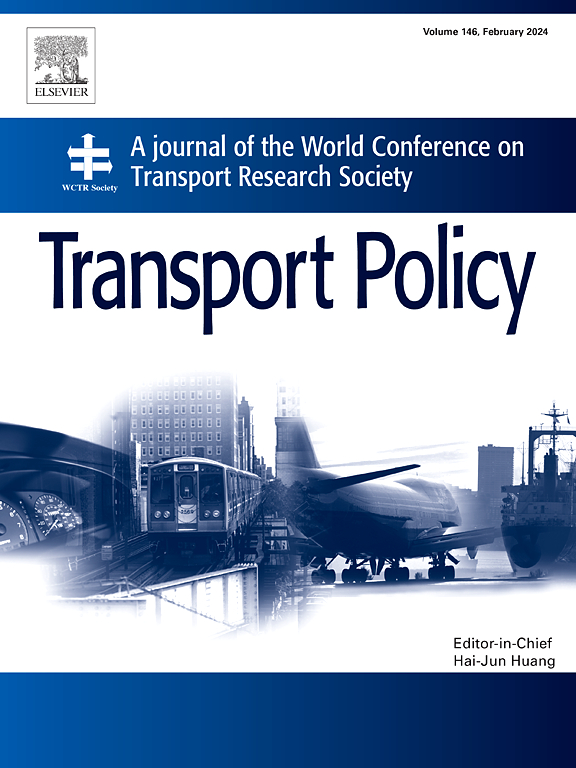瑞典重型公路车队的脱碳成本:关于电动卡车电池的循环经济见解
IF 6.3
2区 工程技术
Q1 ECONOMICS
引用次数: 0
摘要
本研究分析了瑞典重型公路车队在五种情景下的脱碳成本,其中一种情景来自 EUCalc 模型,作为参考情景,另外四种情景则由访谈得出:高速过渡方案,在所有距离上 100% 使用电池电动车 (BEV);高速过渡方案,在本地和区域距离上 100% 使用电池电动车,在长途距离上使用 40% 的电池电动车,到 2050 年,其余 60% 使用燃料电池车 (FCV);低速过渡方案,电池电动车的市场份额每五年增加 15%,本地距离从 2025 年起增加 10%,区域距离和长途距离从 2030 年起增加 10%;低速过渡方案与前一方案类似,但 60% 的电气化长途车队将使用 FCV。然后通过数字模型计算出该系统的费用。该研究通过分析充电范围和温度对 BEV 电池降解的影响及其对电池价值的影响,将可持续性过渡到循环经济的成本研究联系起来。在完全电气化的情况下,尽管运营成本较低,但由于投资成本较高,系统的总成本也较高。充电-放电模式和温度会影响报废电池的剩余容量,从而影响其残值。本文章由计算机程序翻译,如有差异,请以英文原文为准。
Decarbonization costs for the Swedish heavy-duty road fleet: Circular economy insights on electric truck batteries
This study analyzes decarbonization costs for the Swedish heavy-duty road fleet under five scenarios, one taken from the EUCalc model as a reference scenario and four others driven by interviews: a high-speed transition with 100% battery electric vehicles (BEVs) across all distances; a high-speed transition with BEVs taking 100% of the market in local and regional distances and 40% in long distances, with the remaining 60% being fuel cell vehicles (FCVs) by 2050; a low-speed transition with BEVs market share increasing by 15% every five years, starting at 10% from 2025 for local and 2030 for regional and long distances; and a low-speed transition similar to the previous scenario, but with 60% of the electrified long-distance fleet to be FCVs. The system's expenses are then calculated through numerical modeling. The study links research on the costs of sustainability transition to a circular economy by analyzing the effect of charging range and temperature on battery degradation for BEVs and their impact on the batteries' valorization. In full electrification scenarios, despite lower operating expenses, the system incurs a higher total cost because of higher investment expenses. Charging–discharging pattern and temperature impact the remaining capacity, and therefore salvage value, of end-of-life batteries.
求助全文
通过发布文献求助,成功后即可免费获取论文全文。
去求助
来源期刊

Transport Policy
Multiple-
CiteScore
12.10
自引率
10.30%
发文量
282
期刊介绍:
Transport Policy is an international journal aimed at bridging the gap between theory and practice in transport. Its subject areas reflect the concerns of policymakers in government, industry, voluntary organisations and the public at large, providing independent, original and rigorous analysis to understand how policy decisions have been taken, monitor their effects, and suggest how they may be improved. The journal treats the transport sector comprehensively, and in the context of other sectors including energy, housing, industry and planning. All modes are covered: land, sea and air; road and rail; public and private; motorised and non-motorised; passenger and freight.
 求助内容:
求助内容: 应助结果提醒方式:
应助结果提醒方式:


